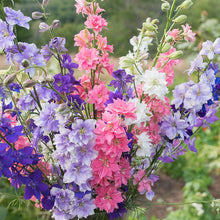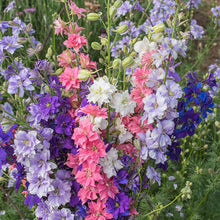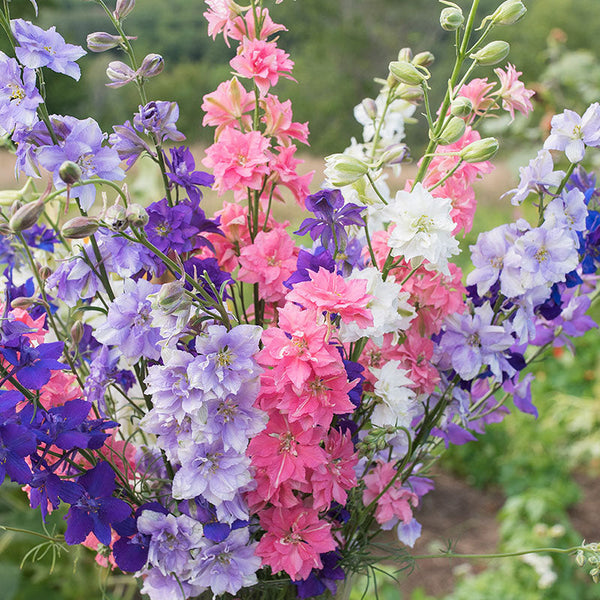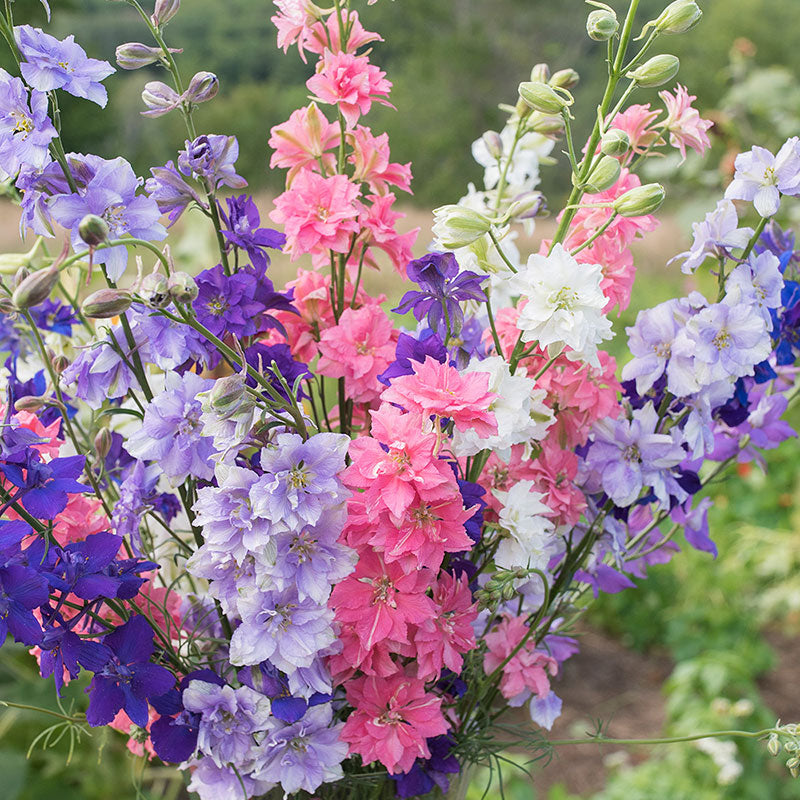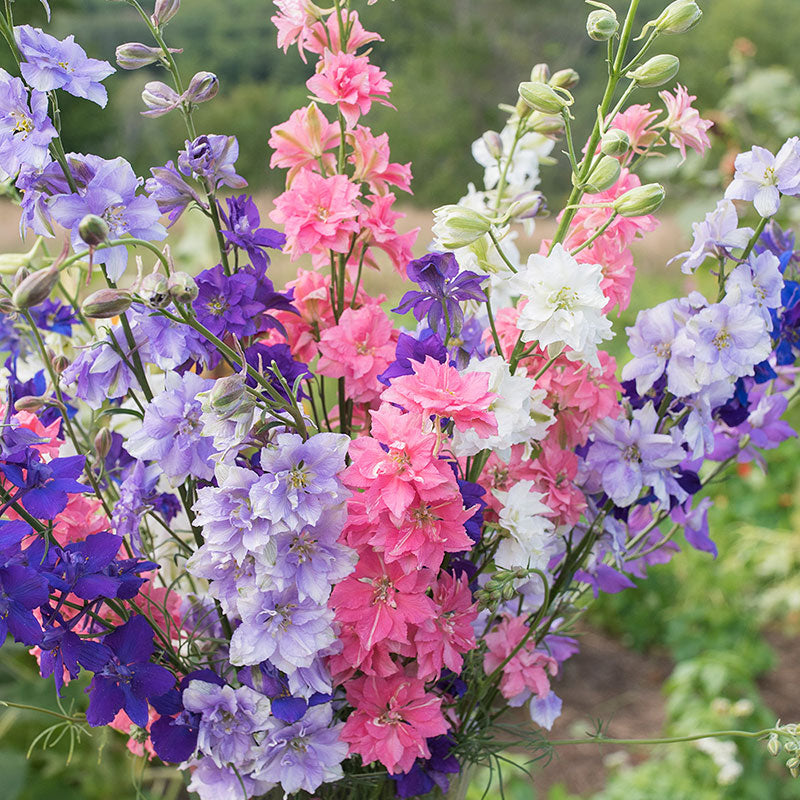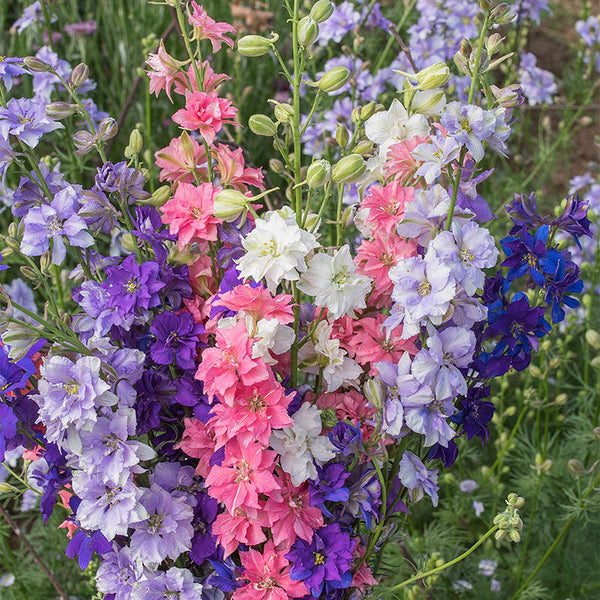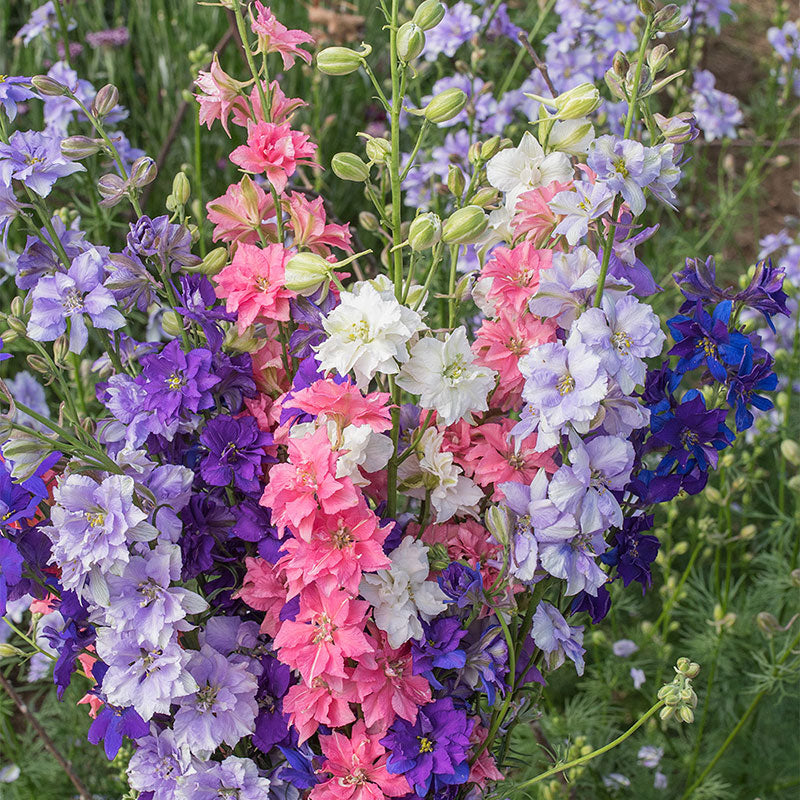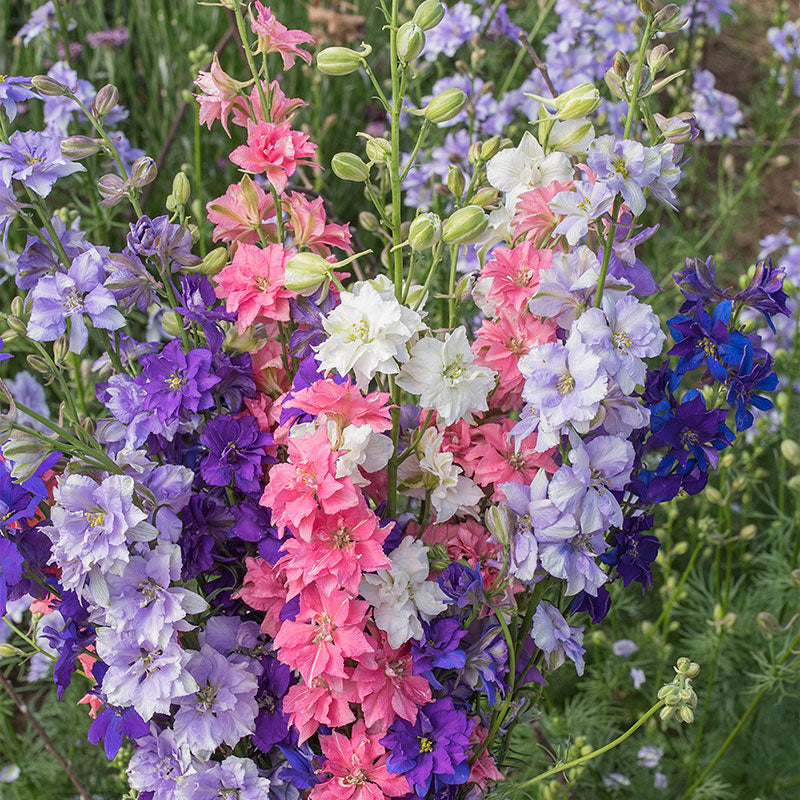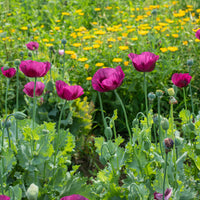SOWING INSTRUCTIONS
Depth:
1/8"; needs darkness to germinate.
Starting Indoors:
Not recommended.
Starting Outdoors:
Recommended. Direct sow in early spring 3-4 weeks before last frost, or early autumn in zones 7-10.
PLACEMENT & CULTIVATION
Larkspurs are popular cut flowers, as they are equally beautiful fresh or dried. These flowers are prized for their varied hues, from jewel tones to misty pastels, as well as their tall and upright growth and graceful foliage. They are welcome in early summer gardens, where they bestow a much-needed vertical element. When planting larkspurs, allow enough space between plants to ensure good air circulation. Additionally, mulch around the plants to keep the soil cool, leaving a space around the stems uncovered. They perform best where summer nights cool down. Caution: all parts contain toxic alkaloids.
Watering Details:
Water regularly, particularly during dry periods, but avoid saturated soils. Somewhat drought tolerant, but best flowering with regular water.
Soil pH:
Slightly acidic to slightly alkaline; if soil is very acidic, add lime before planting.
Fertilizer:
Mix in 2-4" of compost prior to planting.
Diseases & Pests:
Susceptible to fungal problems in poorly drained locations, or where foliage stays wet. Space to allow for good air circulation and use organic fungicides if needed.
When to Cut for Bouquets:
Harvest when 2-5 florets are open.






























